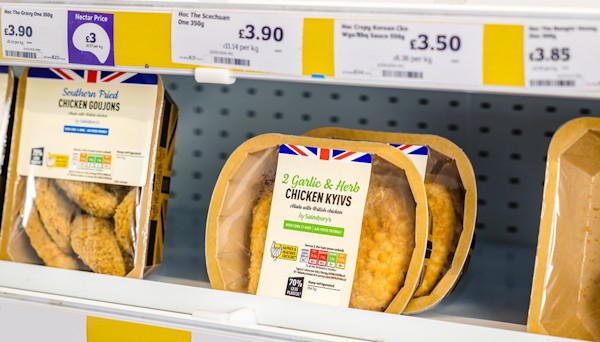Sainsbury’s has revealed that it is introducing several packaging changes across its own-label chicken and fish lines, which are set to save 694 tonnes of plastic a year.

All its salmon fillet trays are switching to pulp cardboard instead of plastic, which is claimed to be a UK retailer first. This will result in 70% less plastic, saving 346 tonnes of plastic a year. The home-recyclable pulp trays are made from sugarcane pulp and are lined with a polyethylene film.
Alongside this, the group is rolling out cardboard trays across its Taste the Difference and ‘by Sainsbury’s’ breaded chicken lines, set to save 300 tonnes of plastic a year. The retailer is also making the same changes to its Taste the Difference breaded fish fillets, set to save 48 tonnes of plastic a year.
Meanwhile, the new packaging will be rolling out throughout the summer across many of the chain’s seasonal chicken lines, including its finger food and BBQ range.
“With salmon being one of our most popular fish, we made it a priority to reduce the plastic on the packaging of this much-loved product as we work towards our Plan for Better goals,” said Claire Hughes, Director of Product and Innovation at Sainsbury’s.
“We are now the first retailer to make the move to have recycled pulp card trays across all our by Sainsbury’s and Taste the Difference salmon products, enabling a whopping 70% plastic reduction. Together with changes to our breaded fish and chicken packaging, we are set to save 694 tonnes of plastic a year – a significant step towards our plastic reduction goals.”
Sainsbury’s recently launched a ‘Good to Know’ logo to help its customers find products that are more sustainable, including those with reduced plastic packaging.



